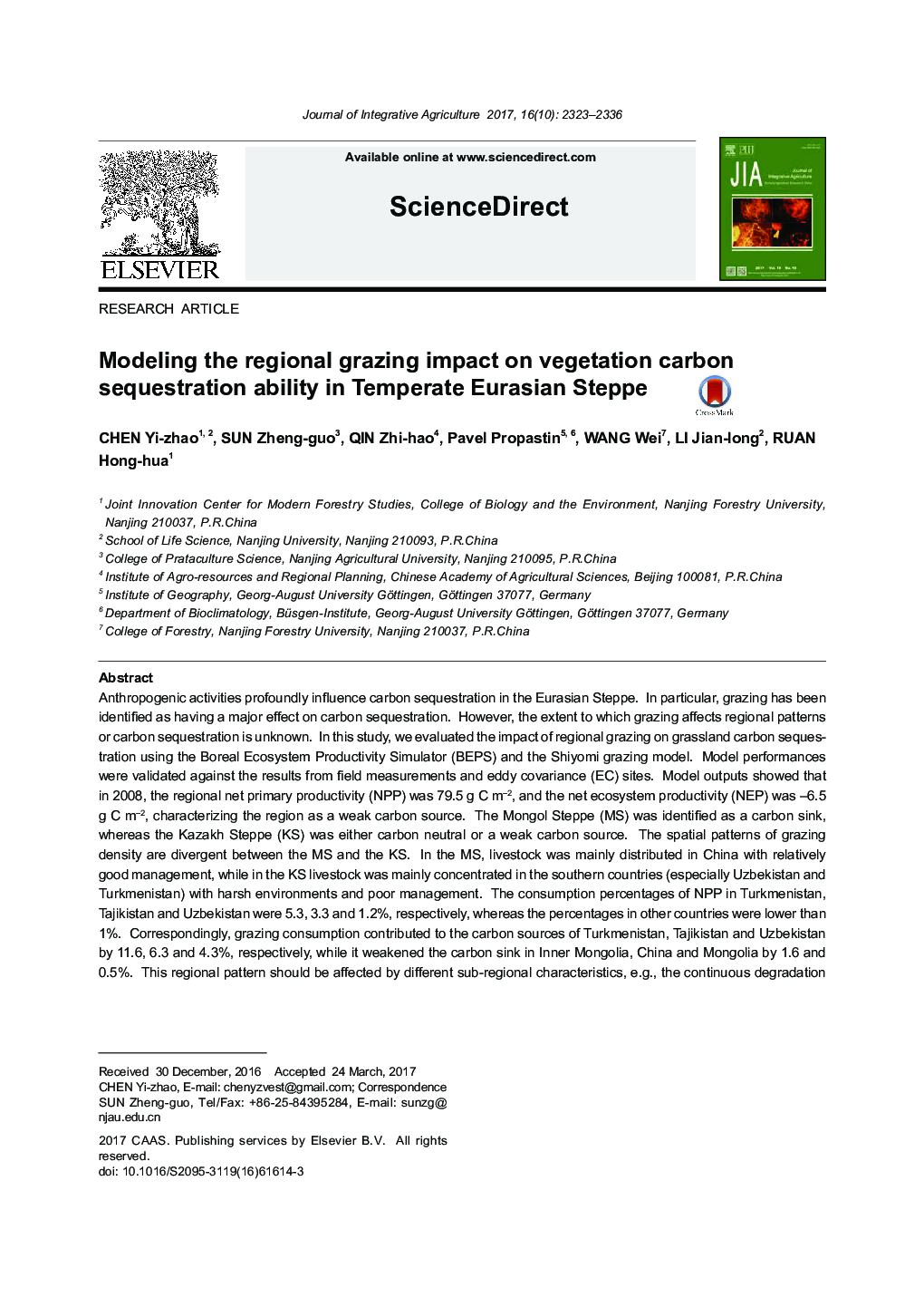| Article ID | Journal | Published Year | Pages | File Type |
|---|---|---|---|---|
| 8875851 | Journal of Integrative Agriculture | 2017 | 14 Pages |
Abstract
Anthropogenic activities profoundly influence carbon sequestration in the Eurasian Steppe. In particular, grazing has been identified as having a major effect on carbon sequestration. However, the extent to which grazing affects regional patterns or carbon sequestration is unknown. In this study, we evaluated the impact of regional grazing on grassland carbon sequestration using the Boreal Ecosystem Productivity Simulator (BEPS) and the Shiyomi grazing model. Model performances were validated against the results from field measurements and eddy covariance (EC) sites. Model outputs showed that in 2008, the regional net primary productivity (NPP) was 79.5 g C mâ2, and the net ecosystem productivity (NEP) was â6.5 g C mâ2, characterizing the region as a weak carbon source. The Mongol Steppe (MS) was identified as a carbon sink, whereas the Kazakh Steppe (KS) was either carbon neutral or a weak carbon source. The spatial patterns of grazing density are divergent between the MS and the KS. In the MS, livestock was mainly distributed in China with relatively good management, while in the KS livestock was mainly concentrated in the southern countries (especially Uzbekistan and Turkmenistan) with harsh environments and poor management. The consumption percentages of NPP in Turkmenistan, Tajikistan and Uzbekistan were 5.3, 3.3 and 1.2%, respectively, whereas the percentages in other countries were lower than 1%. Correspondingly, grazing consumption contributed to the carbon sources of Turkmenistan, Tajikistan and Uzbekistan by 11.6, 6.3 and 4.3%, respectively, while it weakened the carbon sink in Inner Mongolia, China and Mongolia by 1.6 and 0.5%. This regional pattern should be affected by different sub-regional characteristics, e.g., the continuous degradation of grassland in the southern part of the KS and the restoration of grassland in Inner Mongolia, China.
Related Topics
Life Sciences
Agricultural and Biological Sciences
Agricultural and Biological Sciences (General)
Authors
Yi-zhao CHEN, Zheng-guo SUN, Zhi-hao QIN, Pavel Propastin, Wei WANG, Jian-long LI, Hong-hua RUAN,
